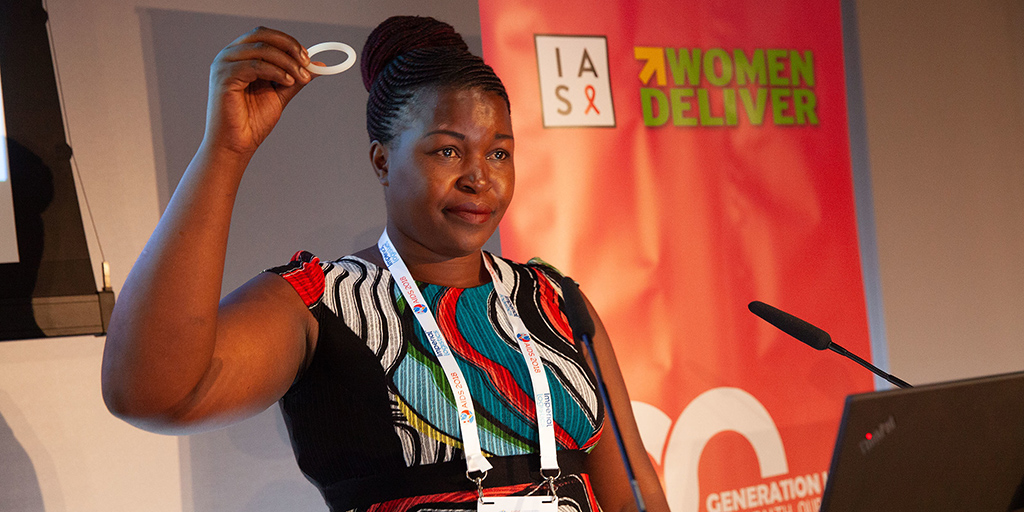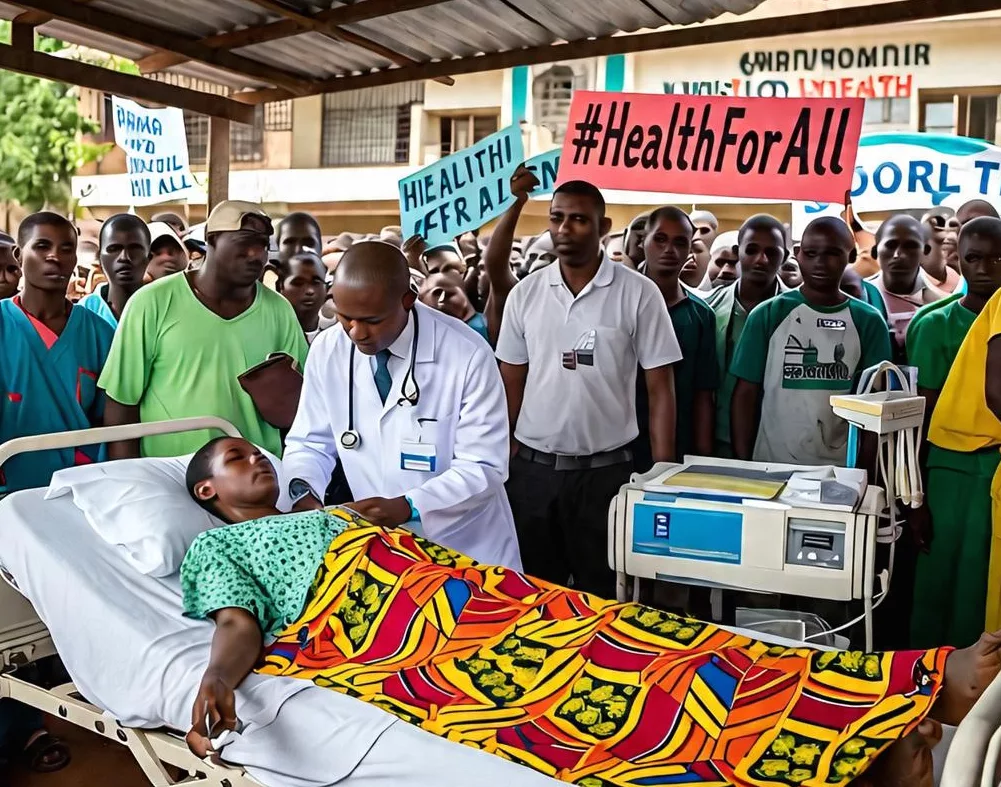|
Getting your Trinity Audio player ready...
|
Innovative HIV Prevention Product for Women That Promotes Choice – Dapivirine Vaginal Ring (DVR) – Gains Momentum Across Africa; With Use Approved in 11 African Countries, Women Can Access the Ring Now in a Growing Number of Implementation and Pilot Studies Across 6 of the 11 Approved Countries
· Botswana, Eswatini, Kenya, Lesotho, Malawi, Namibia, Rwanda, South Africa, Uganda, Zambia, and Zimbabwe grant regulatory approvals or authorization through import permits.
- A memorandum of understanding has been reached on a product license with Kiara Health, a 100% black–owned African-based pharmaceutical manufacturing and healthcare solutions
- New studies have shown the DVR has a favorable safety profile when used in the third trimester of pregnancy and during
- In sub-Saharan Africa, young women are three times more likely to acquire HIV than young men; more HIV prevention methods for women urgently
- On World AIDS Day, progress on access to the ring gives women choice and options to protect themselves against HIV, building upon the HIV Prevention Choice Manifesto, launched earlier this year with support from UNAIDS and
NEW YORK, NY (November 30, 2023)—The dapivirine vaginal ring (DVR), an innovative product to help women reduce the risk of HIV infection, has now gained regulatory approval or authorization through import permits for use in 11 countries in East and Southern Africa, announced the Population Council and IPM South Africa, an affiliate of the Population Council, today. The ring is currently being offered to women through more than 30 implementation and pilot studies across six countries: Eswatini, Kenya, Lesotho, South Africa, Uganda, and Zimbabwe.
The Council also announced today a memorandum of understanding (MOU) with Kiara Health for a strategic partnership for the ring with the goal of reducing costs and increasing women’s access to the product.
The ring is the first long-acting HIV prevention method designed for women that is approved for use in women aged 18 and above. Made of flexible silicone, the ring slowly releases the antiretroviral drug dapivirine in the vagina over a one-month period.
World Health Organization (WHO) data shows that girls and young women ages 24 and younger in sub-Saharan Africa remain one of the most at-risk populations for HIV/AIDS, with infections three times those of similarly aged boys and young men in the region.
Recent research continues to show the favorable safety profile of the DVR when used by women. Pregnant and breastfeeding women, who face significant HIV risk, are in urgent need for additional HIV prevention options. Currently, the DVR is not approved for use in pregnant and breastfeeding women. But a recent study1 — in which 207 healthy pregnant women used the ring — found that the rate at which complications in the third trimester of pregnancy occurred was similar to background rates of these events in the communities in which the study was done. Another study2 found that the ring did not pose safety concerns when used by 148 women who were breastfeeding their babies, reaffirming the ring’s favorable safety profile as an HIV prevention method.
“Women bear the brunt of the HIV/AIDS epidemic,” said Jim Sailer, the Council’s interim co-president and executive director of the Council’s Center for Biomedical Research, the non-governmental organization spearheading the international rollout of the DVR. “The virus is one of the biggest threats to the health and well-being of women. In sub-Saharan Africa, one adolescent girl or young woman becomes infected with HIV every three minutes. We cannot achieve the Sustainable Development Goal (SDG) of ending HIV by 2030 unless we curtail this epidemic in women. Women deserve multiple options to protect themselves against this lifelong disease.”
The ring was developed to provide a long-acting prevention method for women when higher-efficacy products like daily oral PrEP are not viable options. The REACH study (MTN-034, Reversing the Epidemic in Africa with Choices in HIV Prevention), recently published in Lancet HIV,3 emphasized the importance of choice. The research found that, after using both PrEP and the ring for six months each, 67% of the participants chose the ring, 31% chose oral PrEP, and only 2% chose to use neither.
Given this and other documented challenges to daily pill-taking, other newer formulations — including DVR and injectable cabotegravir4 — can directly address barriers to PrEP use among adolescent girls and young women, according to research. The HIV Prevention Manifesto,5 launched in September 2023 by a broad consortium supported by UNAIDS, also points to the importance of choice in prevention tools and empowering communities in keeping women safe from infection.
“Women have told us they want more options in the future, and we’re responding,” said Anita Bhatia Garg, senior director for strategy and commercial relations for the Council, who has been involved in the ring’s development for more than 15 years. “Women need different choices for HIV prevention at different stages of their lives, and the ring could be a critically important option. It complements existing HIV prevention tools and circumvents well-documented challenges that adolescent girls and young women face in taking pills on a daily basis.”
REFERENCES:
2 MTN-043 – B-PROTECTED | Microbicide Trials Network. Study suggests dapivirine vaginal ring is safe to use as HIV prevention during breastfeeding. https://www.mtnstopshiv.org/news/study-suggests-dapivirine-vaginal-ring-safe- use-hiv-prevention-during-breastfeeding.1 Bunge, K. et al. DELIVER: A Safety Study of a Dapivirine Vaginal Ring and Oral PrEP for the Prevention of HIV During Pregnancy. J Acquir Immune Defic Syndr (2023) doi:10.1097/QAI.0000000000003312.
3 Nair, G. et al. Adherence, safety, and choice of the monthly dapivirine vaginal ring or oral emtricitabine plus tenofovir disoproxil fumarate for HIV pre-exposure prophylaxis among African adolescent girls and young women: a randomised, open-label, crossover trial. The Lancet HIV (2023). doi:10.1016/S2352-3018(23)00227-8.
4 Delany-Moretlwe, S. et al. Cabotegravir for the prevention of HIV-1 in women: results from HPTN 084, a phase 3, randomised clinical trial. Lancet 399, 1779–1789 (2022). doi: 10.1016/S0140-6736(22)00538-4.
5 UNAIDS. The HIV Prevention Choice Manifesto for Women and Girls in Africa. (2023). https://www.unaids.org/sites/default/files/media/documents/hiv-prevention-choice-manifesto-women-girls- africa_en.pdf.






